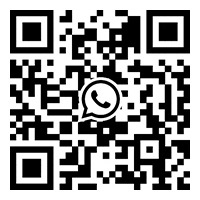What are the safety precautions for aerial work platforms?
Release time:
2025-11-14
The core of aerial work platform safety lies in "compliant environment, sound equipment, and standardized operations"; any oversight in any link may lead to serious accidents such as falls or tipping.
I. Before Operation: Dual Inspection of Environment and Equipment
This is the foundation of safety, and confirmation of all items must be completed before starting the equipment.
Environmental Inspection
Confirm that the operation site ground is flat and solid enough to bear the full weight of the vehicle. Avoid operating on soft, sloped ground or at the edge of foundation pits.
Check for obstacles within the operation radius, including power lines, trees, and buildings. The safe distance from high-voltage power lines must comply with national regulations (not less than 1.5 meters for 10kV and below).
Pay attention to weather conditions. It is strictly prohibited to operate in severe weather such as thunderstorms, strong winds (usually wind speed exceeding Level 5), or heavy fog.
Equipment Inspection
Check if the vehicle's tire pressure and brake system are normal, and if the parking brake is reliable.
Confirm the status of the outriggers, including whether the outrigger pads are intact and whether the extension/retraction is smooth. Before operation, all outriggers must be fully extended and firmly supported to ensure the vehicle body is level.
Inspect safety devices such as the working platform, guardrails, and safety belts to ensure there is no damage and they are firmly connected. Check that the lifting and rotating mechanisms operate normally without abnormal noise or jamming.
II. During Operation: Strictly Abide by Operating Specifications
Stay focused during operation, eliminate any non-compliant operations, and ensure the safety of personnel and equipment.
Personnel Operation Requirements
Operators must hold a valid certificate to work. It is strictly prohibited for uncertified personnel to operate the equipment or work inside the platform.
Fasten the safety belt during operation, and securely hook the safety belt to the dedicated hook on the working platform. Climbing outside the platform or crossing the guardrails is strictly prohibited.
Overloading is strictly prohibited inside the working platform. The total weight of personnel and materials must not exceed the specified limit of the equipment. Materials should be placed evenly to avoid center-of-gravity deviation.
Equipment Operation Restrictions
Operate the control lever smoothly when lifting, lowering, or rotating to avoid sudden lifting, lowering, or rotation, which may cause platform shaking and personnel imbalance.
If any equipment abnormality is found during operation (such as abnormal noise, oil leakage, or slow movement), stop the operation immediately, lower the platform to the ground, and then conduct inspection and maintenance. Operating with faults is strictly prohibited.
Open-flame operations such as welding and cutting on the working platform are strictly prohibited. If such operations are necessary, fire prevention measures must be taken, and flammable materials inside the platform must be cleaned up in advance.
III. After Operation: Equipment Reset and Site Cleanup
After the operation, complete the finishing work in a standardized manner to prepare for the next use and eliminate potential safety hazards at the site.
Equipment Reset
First, lower the working platform to the lowest position, retract the telescopic boom and rotating mechanism, and then retract the outriggers in sequence to ensure all components are restored to the driving state.
Turn off the equipment power, check the fuel and hydraulic oil levels, and replenish them in a timely manner if insufficient. Meanwhile, clean up debris and stains inside the platform.
Site Cleanup
Remove warning signs and isolation facilities at the operation site. Ensure there are no leftover tools or materials at the site, and that they do not affect the passage of other vehicles or personnel.
Complete the equipment usage record, indicating the operation time, equipment status, and any problems found, to facilitate subsequent maintenance and traceability.


Latest News
Application of spider lift in archaeology
2025-02-10



